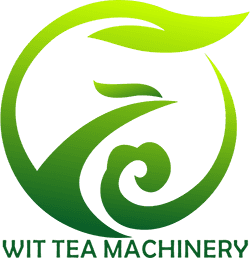(1) Manual rolling: Manual rolling is suitable for rolling a small amount of green tea or some other famous teas. Manual kneading is carried out on the kneading table. During the operation, hold the tea leaves in the palm of your hand with one hand or both hands, and push and knead the tea leaves forward on the kneading blade, so that the tea mass is turned over in the palm of your hand, and kneaded to a certain extent. Does not clump.
(2) Mechanical rolling: Mechanical rolling is performed using a tea rolling machine. When mechanically rolling, it is required that the amount of leaves in the machine should be appropriate, “the young leaves should be put in more, and the old leaves should be put in less”, the pressure should be “light, heavy and light”, and “young leaves should be rubbed cold and lightly”, “old leaves should be rubbed lightly”. Hot kneading and heavy kneading”, especially for some famous green tea processing, must be “light pressure and short kneading”.
Nowadays, most of the kneading is done with a kneading machine. The tea leaves are put into the kneading barrel. It is subjected to multiple forces. Generally, the machine tea kneading takes 20 to 30 minutes. The more tea leaves in the kneading barrel, the more time it takes.
Kneading is divided into cold kneading and hot kneading. Cold kneading means that the green leaves are spread out for a period of time and then kneaded. It is generally used for tender tea leaves, because the young leaves have low cellulose content and high pectin content, and are easy to shape when kneaded. ;
Old leaves should be rolled while hot. Old leaves contain more starch and sugar. Tea twisting while hot will help starch continue to gelatinize and increase the viscosity of leaf surface substances. There are more cellulose in old leaves. It can soften the cellulose and make it easier to form strips. The disadvantage of hot kneading is that it is easy for the leaves to turn yellow, and the water is stuffy.
Post time: Jun-11-2022
